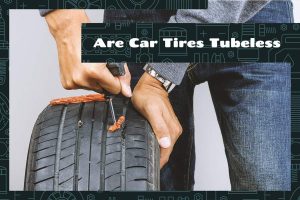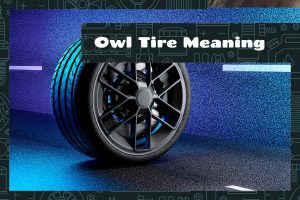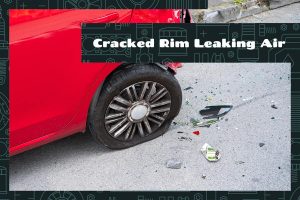Every motorist knows the importance of keeping car tires well-inflated. However, the idea of inflating a car tire using a bike pump might sound peculiar to some, and understandably so. Despite their dissimilarities, there is more common ground between bike pumps and car tire pumps than you might think.
You can indeed inflate a car tire with a bike pump. However, it’s not the easiest task. It demands significant physical effort and time.
This article will explore the feasibility of using a bike pump to inflate a car tire. It provides a step-by-step guide on how to do it and presents alternative methods of inflating car tires.
The Basics of Tire Inflation
Proper tire inflation is crucial to the smooth running of your vehicle. Correctly inflated tires provide optimal road grip, enhance fuel efficiency, and prolong tire life. Conversely, under-inflated or over-inflated tires can lead to uneven tire wear, reduced vehicle control, and even tire blowouts.
A significant difference between car tires and bike tires lies in their size and pressure requirements. Car tires are larger and require higher pressure (usually around 35 PSI for passenger cars), while bike tires are smaller with lower pressure needs (around 40-60 PSI for mountain bikes and 80 PSI or higher for road bikes).
However, both types of tires use similar methods of inflation, either via manual pumps or air compressors. The principles are the same: an inflating device forces air into the tire, increasing its internal pressure.
Understanding Pumps
Bike pumps typically come in two types: floor pumps and hand pumps.
With their larger air chambers and sturdy bases, floor pumps allow for quick, efficient inflation. They’re your best ally for routine pressure checks at home. On the other hand, hand pumps or mini pumps are portable and designed for cyclists to carry on rides should they encounter a flat tire.
Car tire pumps are usually electric-powered. They’re capable of delivering high-pressure air quickly and effortlessly, making them a go-to for motorists. Some variants are portable, while others are stationary, often found in garages or gas stations.
The operation of bike and car tire pumps revolves around the same principle: they draw in air, compress it, and push it into the tire. A built-in or separate pressure gauge helps monitor tire pressure during inflation.
Can You Pump a Car Tire with a Bike Pump?
When confronted with a low-pressure car tire and only a bike pump at hand, you may find yourself asking, “Can I really pump a car tire with a bike pump?” Though it might sound unconventional, the answer to this question is a resounding “yes.” However, feasibility is a lot different from practicality.
The Practicality of the Idea
There are a few reasons why a bike pump is not the most practical tool for inflating car tires. Firstly, a bike pump is manually operated, meaning it requires physical effort to pump the air.
Secondly, bike pumps are designed for smaller volumes (i.e., bike tires), and so, they displace less air with each stroke compared to a car tire pump or an air compressor. Therefore, it takes a considerably longer time to inflate a car tire using a bike pump.
Potential Challenges and Limitations
Inflating a car tire with a bike pump isn’t without its challenges. Here are a few potential hurdles you might encounter:
- Physical Exertion: Since bike pumps are manually operated, inflating a car tire can be physically demanding, especially if the tire is significantly low on pressure.
- Time-Consuming: A bike pump displaces a much smaller air volume with each stroke than an air compressor. Consequently, using a bike pump will take more time to inflate a car tire.
- Accuracy of Pressure: Most bike pumps come with built-in pressure gauges. However, these gauges are designed for the higher pressures found in bike tires and may not be as accurate at the lower pressures typical in car tires.
- Connectivity Issues: While most bike pumps are designed to fit Schrader valves (the standard for car tires), some models are made exclusively for Presta valves (common on road bikes). Ensure your pump is compatible with Schrader valves.
A Step-by-Step Guide: Pumping a Car Tire with a Bike Pump
Here is a step-by-step guide on how to inflate a car tire using a bike pump. It’s going to take you a while to achieve proper inflated levels, so don’t say we didn’t warn you!
- Gather Your Equipment: Before you start, ensure you have all the necessary equipment. You’ll need a bike pump with a Schrader valve connector, your vehicle’s user manual (for recommended tire pressure), and a tire pressure gauge (if your pump doesn’t have one built-in).
- Check the Tire Pressure: Use the tire pressure gauge to check the current pressure of your car tire. Compare it with the recommended pressure from your vehicle’s manual.
- Prepare the Bike Pump: Ensure the bike pump’s valve connector is clean and free from any blockages.
- Attach the Pump to the Tire: Connect the bike pump’s Schrader valve connector to the car tire’s valve stem. Ensure the connection is secure to prevent air leakage.
- Start Pumping: Start pumping using firm and steady strokes. This is where the physical exertion comes into play.
- Monitor the Pressure: Regularly check the tire pressure using the gauge. Remember not to over-inflate.
- Disconnect the Pump: Once you’ve reached the desired pressure, carefully disconnect the pump from the tire’s valve stem. Make sure not to let any air escape.
This method is only a stop-gap solution. Get your tire pressure checked and adjusted at a service station as soon as possible.
Alternative Methods for Inflating Car Tires
A bike pump might be a good last-resort method for inflating your car tires, but there are better alternatives.
- Portable Air Compressors: Portable air compressors are compact devices that are perfect for emergencies on the road. They usually run on a car’s 12-volt power outlet and can inflate a tire in minutes.
- CO2 Cartridges: CO2 cartridges are small canisters filled with compressed carbon dioxide. They’re portable and can inflate a tire quickly. However, they’re single-use items, making them less cost-effective for regular use.
- Air Tanks: Air tanks are pre-filled containers of compressed air. They can inflate a car tire quickly but must be refilled once depleted. You can refill them using an air compressor.





